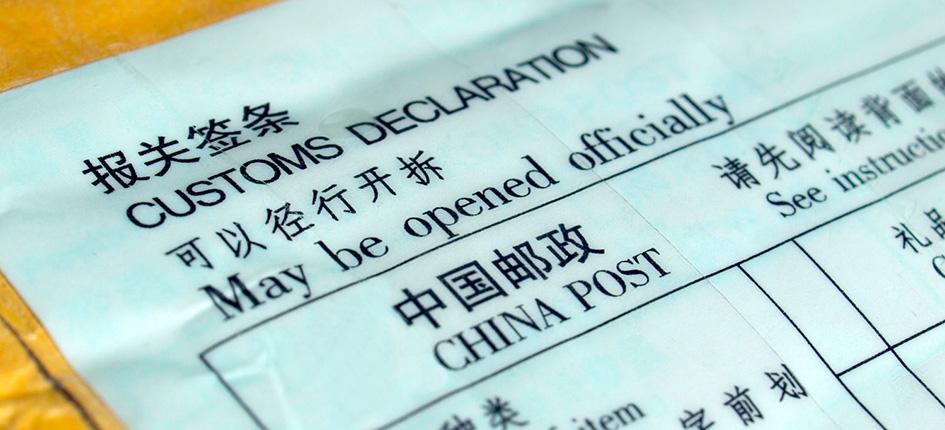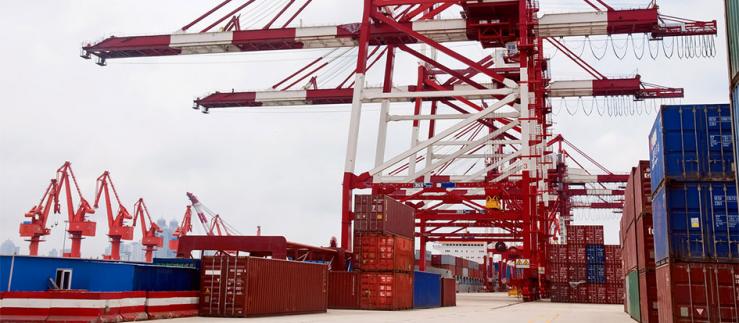FTA with China: came into force on 1 July 2014.
Questions free trade agreements with China
The questions most frequently asked about the new free trade agreements with China.

Für eine reine Luftfrachtsendungen gilt der Luftfrachtbrief (AWB) als Nachweis.
Für Sendungen, die auf dem Seeweg ab einem Hafen in der EU mit einem Transportdokument Schweiz-China versandt werden, gilt das Transportdokument als Nachweis sofern der ganze Transport vom Hafen in der EU zum Bestimmungsort in China abgedeckt ist. Dies gilt auch wenn die Waren in Hongkong oder Macao umgeladen werden und von dort nach China weiter transportiert werden.
Für Sendungen mit mehr als einem Transportdokument für die Strecke Schweiz-China gilt wie bis anhin, dass Ermächtigte Ausführer von der Vorlage einen „Non-Manipulation Certificates“ ausgenommen sind, aber das Handelspapier mit der Ursprungserklärung muss mit Zusatzangaben ergänzt werden. Siehe dazu Zirkular der Eidgenössische Zollverwaltung: Freihandelsabkommen Schweiz-China Direktbeförderung (Update, Stand: 28.1.2016)
Nicht Ermächtigte Ausführer müssen ein „Non-Manipulation Certificate“ vorweisen.
Der Zollabbau in China erfolgt schrittweise – die Abstufung ist nach Zolltarifnummern festgelegt. Manche Waren werden sofort zollbefreit, bei anderen erfolgt der Zollabbau über 5 bis 10 Jahre; bei einzelnen Produkten sogar über 12 oder 15 Jahre.
Die erste Reduktion erfolgte am 1. Juli 2014, dem Tag des Inkrafttretens des Abkommens. Der nächste Schritt beim Zollabbau erfolgt am 1. Januar 2015 und so weiter, bis der jeweilige Zollabbau abgeschlossen ist.
Die aktuell gültigen präferenziellen Zolltarife sind in der Zolldatenbank abrufbar.
Die Listenregeln sind wie üblich im Tares sowie im Dienstdokument D.30 der Zollverwaltung abrufbar.
Das Wichtigste kurz zusammengefasst:
- WO (Wholly obtained) = vollständig in der Schweiz oder in China gewonnen (Urprodukt)
- CC (Change of Chapter) = Positionssprung auf Kapitelebene (2-stellige HS-Position)
- CTH (Change of Tariff Heading) = Positionssprung auf Nummernebene (4-stellige HS-Position)
- CTSH (Change of Tariff Subheading) = Positionssprung auf Unternummernebene (6-stellige HS-Pos.)
- VNM% (maximum percentage of the value of non-originating materials) = wertdefinierte Listenregel (maximaler Prozentsatz des Wertes der verwendeten Vormaterialien ohne präferenziellen Ursprung Schweiz/China)
Es besteht eine allgemeine Werttoleranz für WO, CC, CTH und CTSH von 10% des Ab-Werk-Preises.
The declaration of origin on the invoice deviates from the standard formulation and must be written in English. The "Registration No." is the number of the approved exporter authorisation without the year. You also need a 23-digit serial number. Declarations of origin must be sent electronically. Please see the Swiss Customs Administration website for details about AE data: Approved exporters.
No, the agreement with China stipulates that only approved exporters can include declarations of origin on the invoice. All other exporters must use the movement certificate EUR.1 China. As well as the customs tariff number and a description of the goods, you must provide additional origin criterion information in field 8.
- WO (Wholly obtained) = wholly obtained in Switzerland or China (original product)
- WP = wholly produced (produced only with material originating from Switzerland or China)
- PSR = goods produced with non-preferential materials which meet the product-specific list rules
Yes, most duty charged on import into Switzerland will be set to 0% when the agreement comes into force. Form A will no longer be required, and cannot therefore be used for imports since 1 July 2014.
If no valid documentary evidence of origin exists at the time of the customs declaration, the person subject to the declaration obligation can request a provisional import assessment for goods that are covered by the Agreement. According to established administrative practice regarding free trade agreements, the documentary evidence of origin has to be submitted within two months (period of validity of provisional assessment; moreover, the person subject to the declaration obligation can submit a written and substantiated request for a deadline extension before this period of validity expires).
This is a bilateral agreement between Switzerland and China. It follows therefore that cumulation with other EFTA states or other countries is not possible. For example, goods imported under preferential terms from China cannot be exported preferentially onto the EU without sufficient processing.
Nein. Die Ursprungserklärung kann auch bei diesem FHA auf einem anderen Handelsdokument als der Rechnung angebracht werden. In diesem Fall muss das alternative Handelspapier im EACN hochgeladen werden. Wichtig ist, dass die Ware direkt geliefert wird. (Direktversandbestimmungen).




